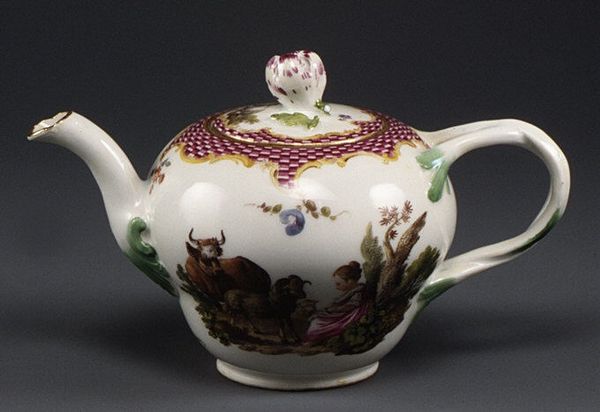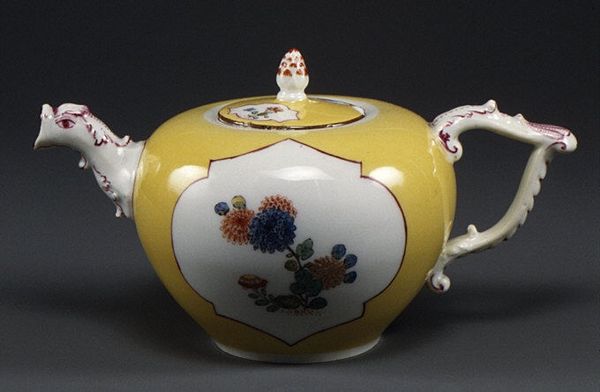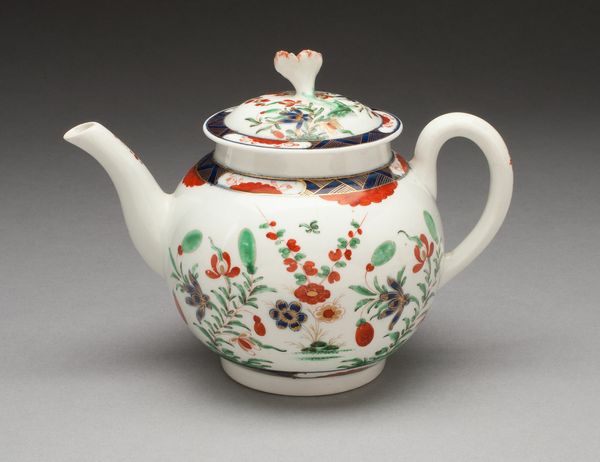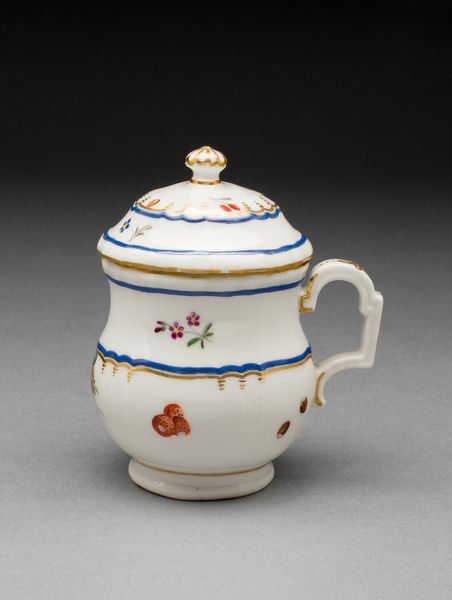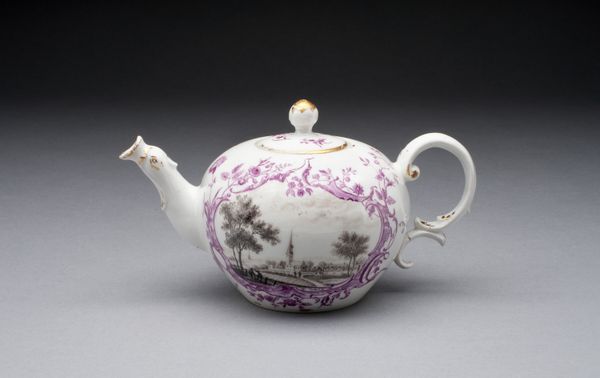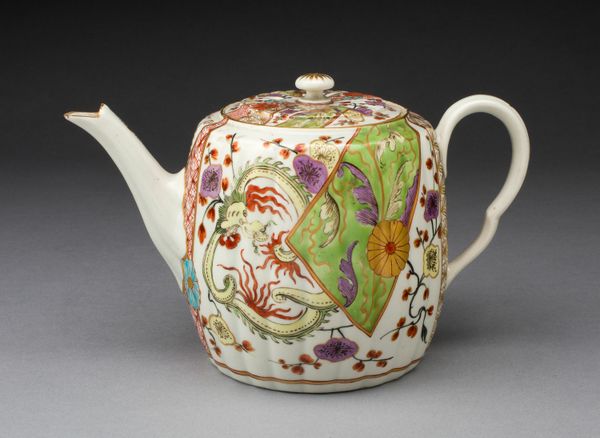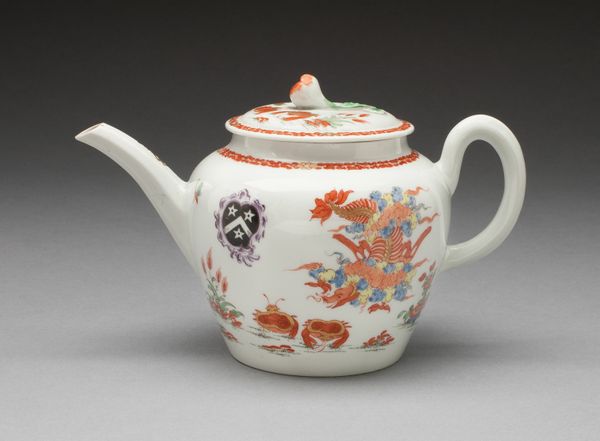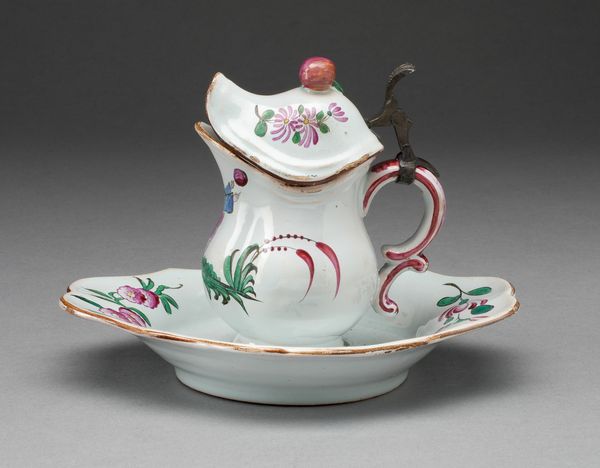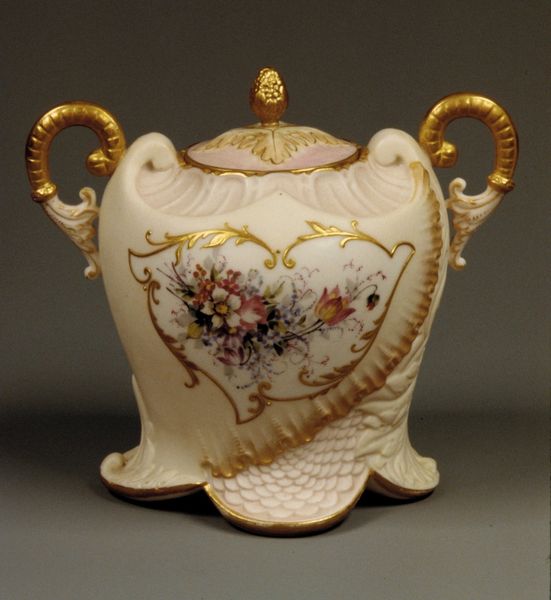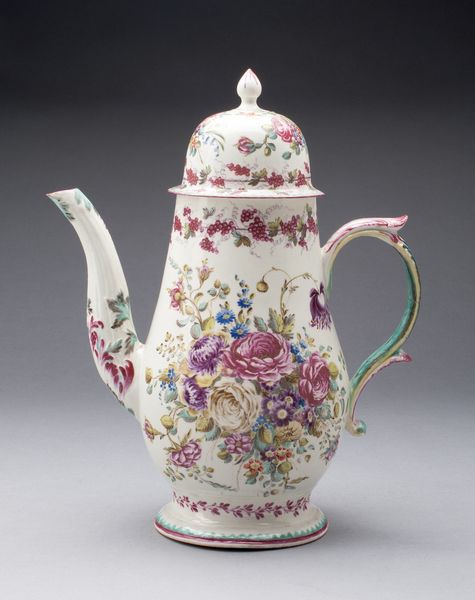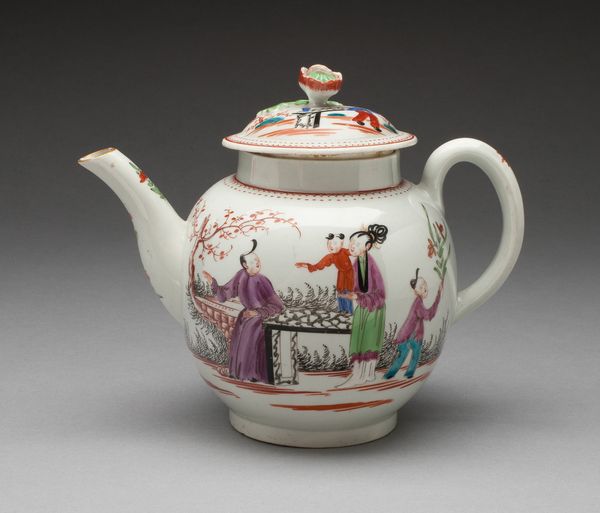
ceramic, porcelain, sculpture
#
ceramic
#
jewelry design
#
porcelain
#
sculpture
#
ceramic
#
decorative-art
#
rococo
Dimensions: Height: 4 in. (10.2 cm)
Copyright: Public Domain
Editor: Here we have a porcelain teapot, made around 1735 to 1755 by the Meissen Manufactory. The yellow and white are cheerful, and it almost looks too precious to use! What symbols or deeper meanings do you find in this piece? Curator: Notice how the artist contrasts the vivid yellow glaze with the delicate, hand-painted floral panels. These motifs evoke the Rococo period's obsession with nature, but also the careful arrangements of flowers, which become emblems of cultivated taste and courtly love. The symbolic language of flowers – floriography – was very fashionable at this time. Do you think these were common flowers or selected for their known meanings? Editor: I imagine that with that level of detail, the selection must have been deliberate. How would someone of the time have read them? Curator: Roses are often associated with love and beauty, particularly devotion. But the context and color matter. For instance, a pink rose like this can represent gentility. Also, think about what it meant to consume tea at this time. Editor: So the act of pouring and drinking from it would have layered even more meanings? Curator: Precisely. Drinking tea in the Rococo era wasn't just about refreshment, it was a ritual, an expression of status, and a performance of refinement, the objects shaping the ritual as much as the ritual shapes them. We see continuity with how people relate to their objects today. Editor: That’s a beautiful perspective! I'll definitely think about the cultural weight these objects carried with them. Curator: I’m glad. Every curve, every flower, whispering stories from a bygone era, speaking even now if we only learn to listen.
Comments
No comments
Be the first to comment and join the conversation on the ultimate creative platform.
